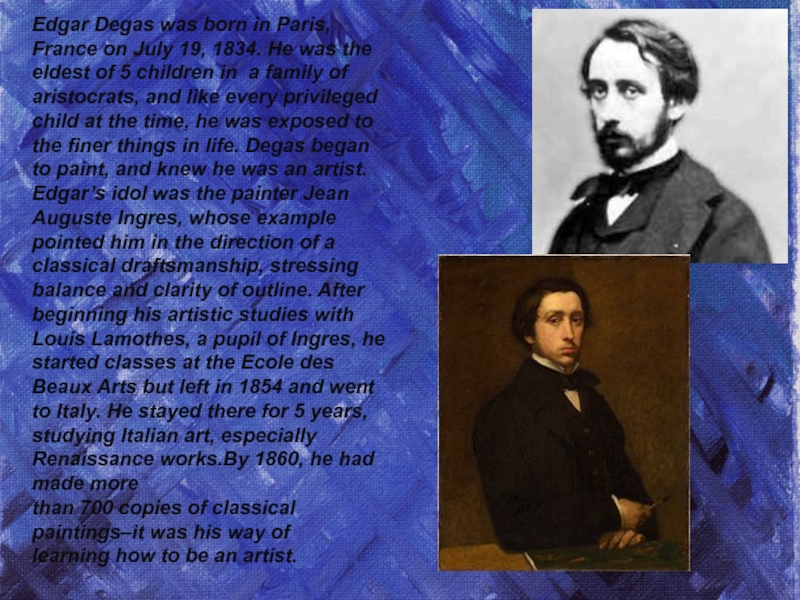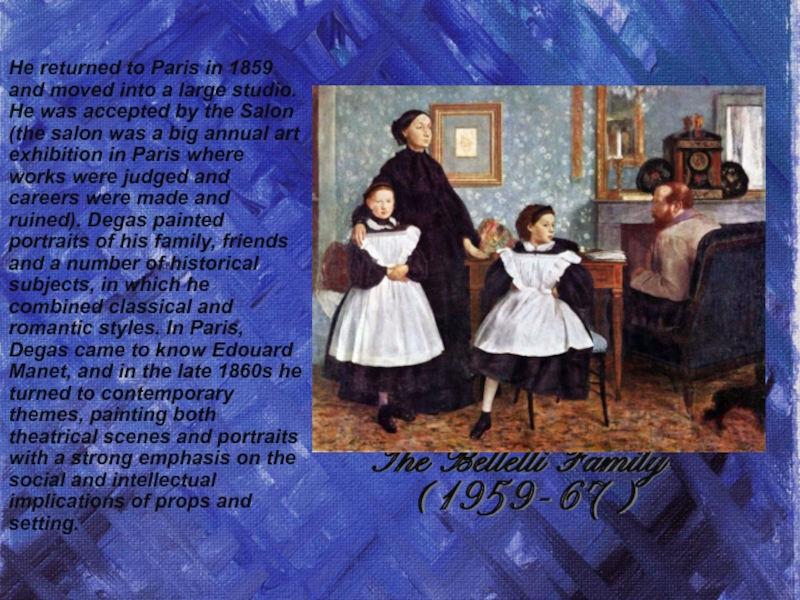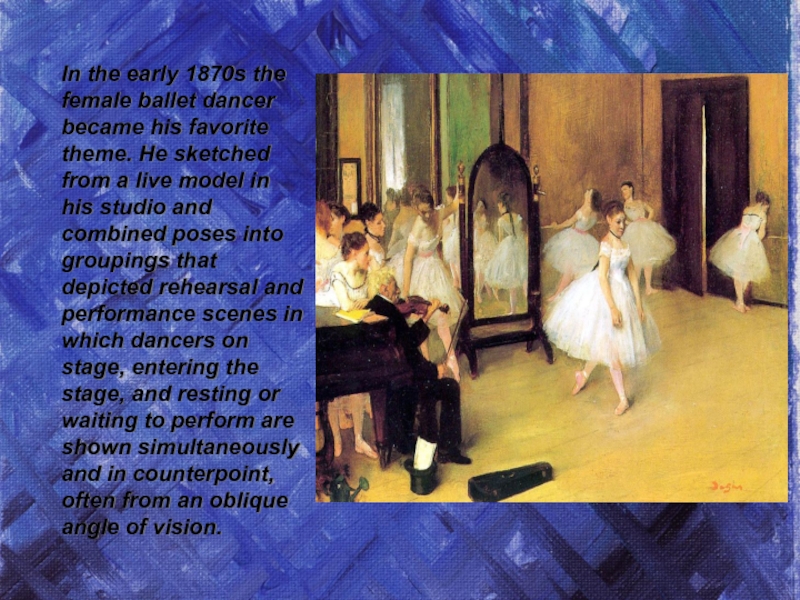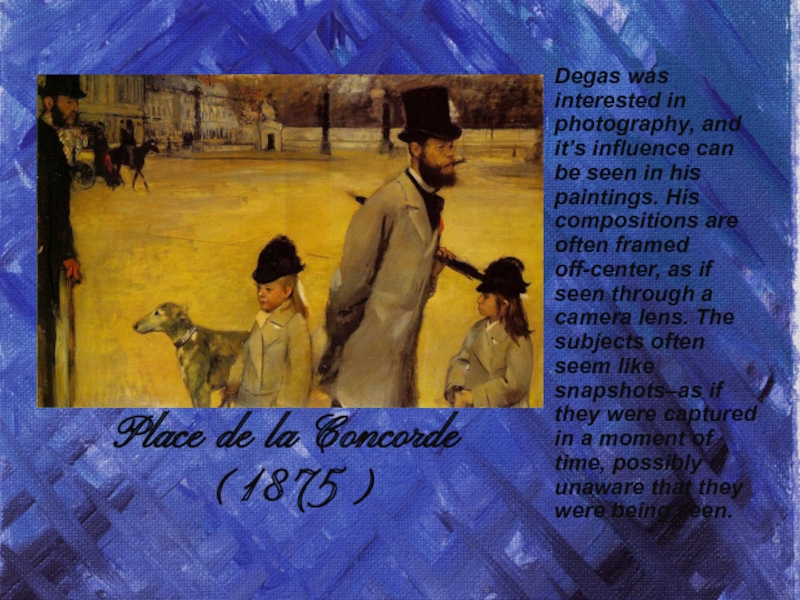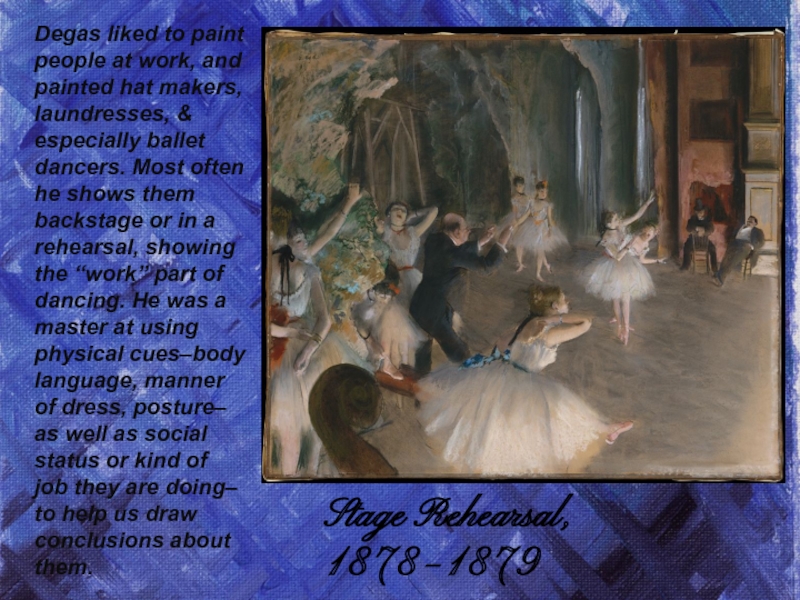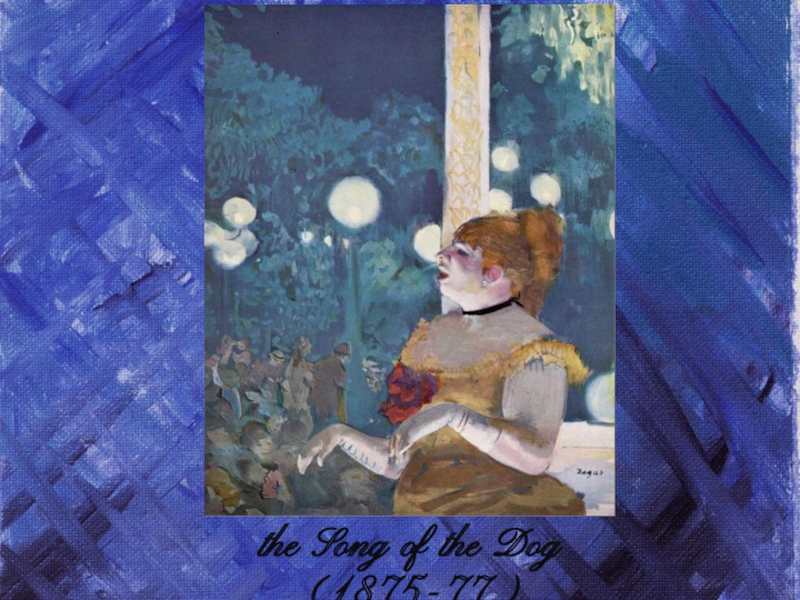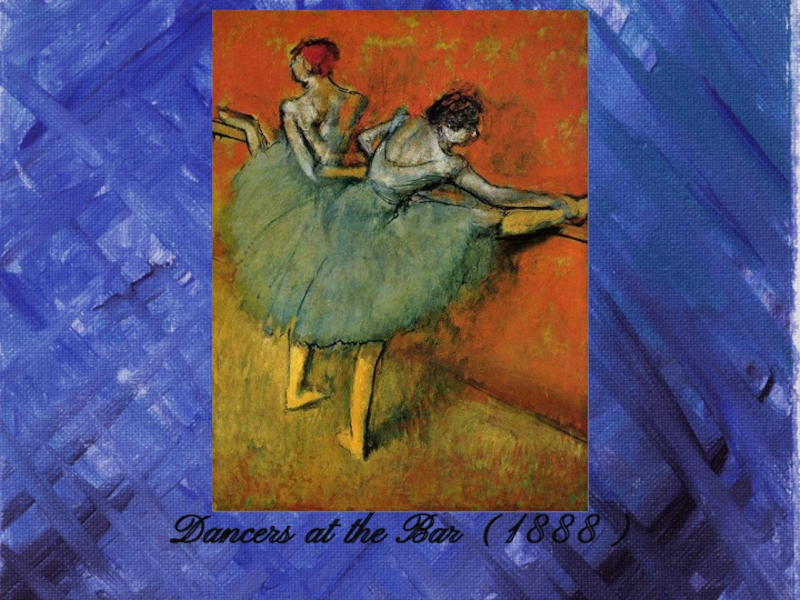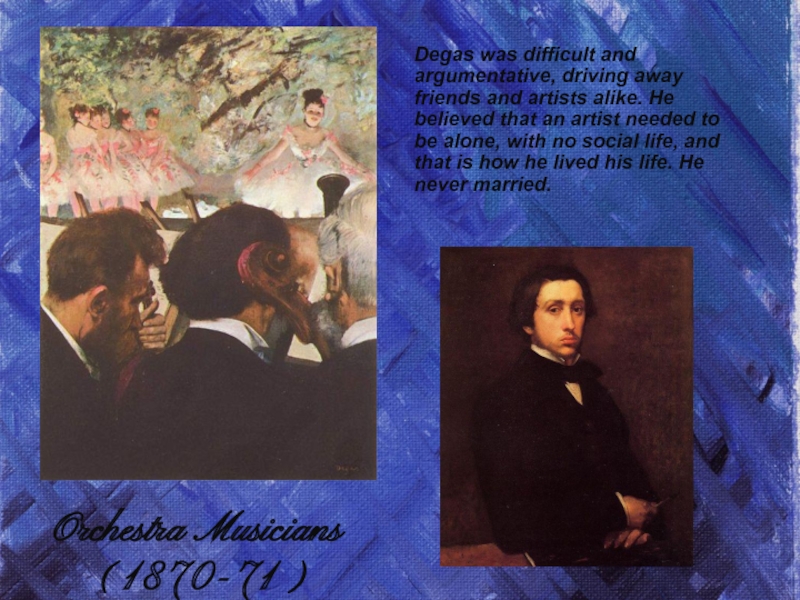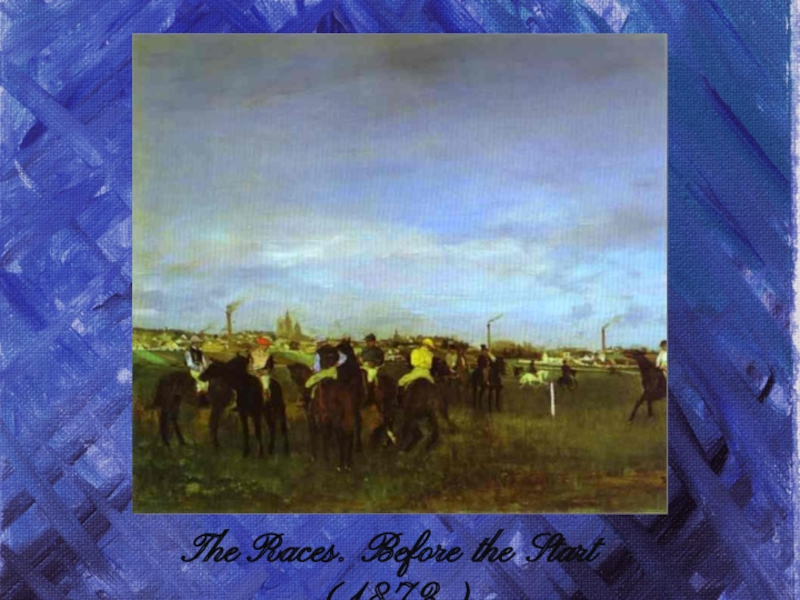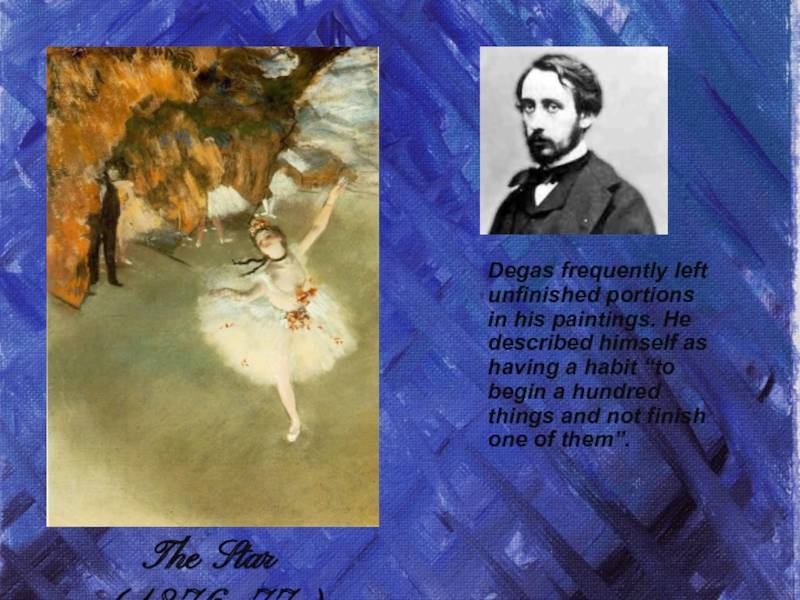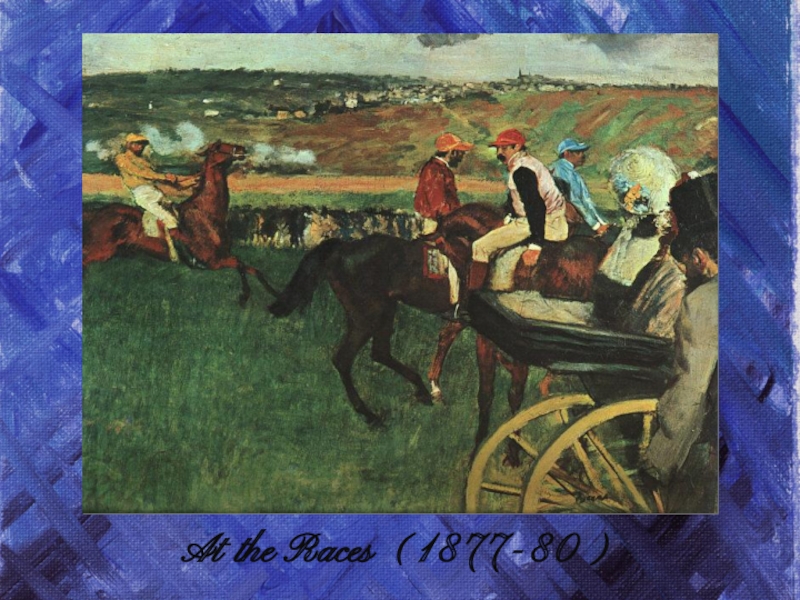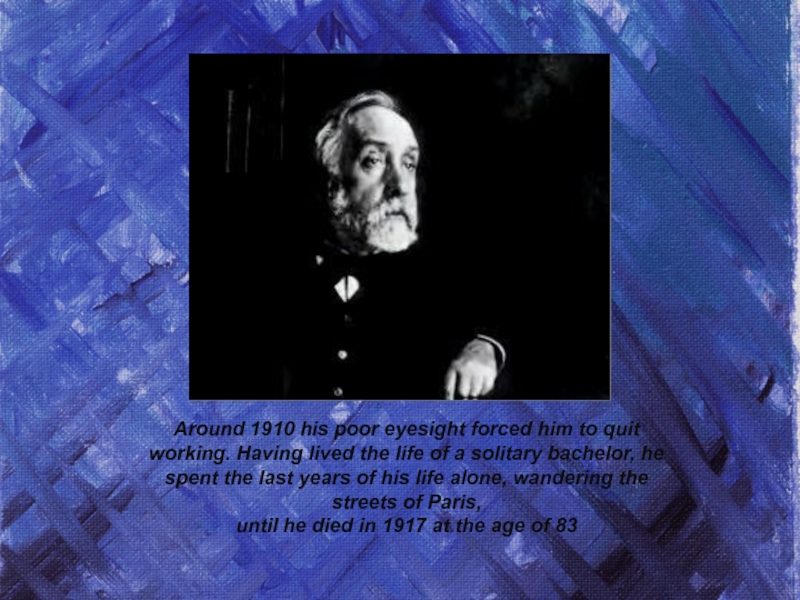- Главная
- Разное
- Дизайн
- Бизнес и предпринимательство
- Аналитика
- Образование
- Развлечения
- Красота и здоровье
- Финансы
- Государство
- Путешествия
- Спорт
- Недвижимость
- Армия
- Графика
- Культурология
- Еда и кулинария
- Лингвистика
- Английский язык
- Астрономия
- Алгебра
- Биология
- География
- Детские презентации
- Информатика
- История
- Литература
- Маркетинг
- Математика
- Медицина
- Менеджмент
- Музыка
- МХК
- Немецкий язык
- ОБЖ
- Обществознание
- Окружающий мир
- Педагогика
- Русский язык
- Технология
- Физика
- Философия
- Химия
- Шаблоны, картинки для презентаций
- Экология
- Экономика
- Юриспруденция
Edgar Degas презентация
Содержание
- 1. Edgar Degas
- 2. Edgar Degas was born in Paris, France
- 3. He returned to Paris in 1859 and
- 4. Woman Seated beside a Vase of Flowers (1865)
- 5. On a visit in 1872 to Louisiana,
- 6. In the early 1870s the female ballet
- 7. The Dance Class (1873-76) He returned to
- 8. Ballet Rehearsal, 1873
- 9. Place de la Concorde (1875) Degas was
- 10. L’Absinthe (1876)
- 11. Ballet Rehearsal (1873) Degas liked to paint
- 12. the Song of the Dog (1875-77)
- 13. Dancers at the Bar (1888)
- 14. Degas was difficult and argumentative, driving away
- 15. The Races. Before the Start (1873)
- 16. The Star (1876-77) Degas frequently left unfinished
- 17. At the Races (1877-80)
- 18. Blue Dancers (1898-99)
- 19. Degas also created sculptures, although this is
- 20. Around 1910 his poor eyesight forced him
Слайд 2Edgar Degas was born in Paris, France on July 19, 1834.
Слайд 3He returned to Paris in 1859 and moved into a large
The Bellelli Family (1959-67)
Слайд 5On a visit in 1872 to Louisiana, where he had relatives
The New Orleans Cotton Exchange (1873)
Слайд 6In the early 1870s the female ballet dancer became his favorite
Слайд 7The Dance Class (1873-76)
He returned to Paris in 1873 after the
Слайд 9Place de la Concorde (1875)
Degas was interested in photography, and it’s
Слайд 11Ballet Rehearsal (1873)
Degas liked to paint people at work, and painted
Stage Rehearsal, 1878–1879
Слайд 14Degas was difficult and argumentative, driving away friends and artists alike.
Orchestra Musicians (1870-71)
Слайд 16The Star (1876-77)
Degas frequently left unfinished portions in his paintings. He
Слайд 19Degas also created sculptures, although this is the only one that
Little Dancer of Fourteen Years (1881)

